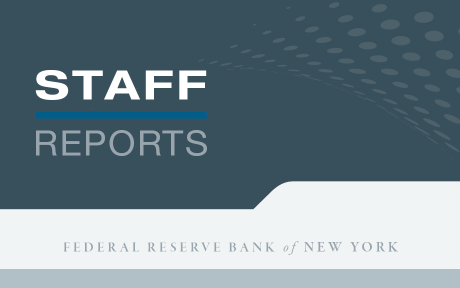
In light of the rapid growth of nonbank financial institutions (NBFIs), many have argued that bank-led financial intermediation is on the decline, based on the traditional notion that banks operate to take in deposits and make loans. However, we argue that deposit-taking and loan-making have not accurately characterized U.S. banking operations in recent decades. Instead, as we propose in this post, absent regulatory restrictions, banks naturally expand their boundaries to include NBFI subsidiaries. A significant component of the growth of NBFIs has in fact taken place inside the boundaries of banking firms.
The Changing Nature of Banking
Historically, banks were primarily defined by their deposit-taking and loan-making operations, functioning within a regulatory environment epitomized by the Glass-Steagall Act of 1933, which separated commercial banking from investment banking and other financial services.
In the mid-1980s, regulatory interpretations started to evolve, bank holding companies (BHCs) were granted increased flexibility to engage in a broader range of activities, and became more diversified. They increasingly expanded into nonbank sectors in the following decades. In a recent paper, “The Nonbank Footprint of Banks,” we provide insights into this phenomenon, using a unique dataset of the organizational structure and financial reports of BHCs combined with less known and underutilized financial regulatory filings of BHCs and their subsidiaries, to present new evidence on the expanding boundaries of the banking firm over the last few decades.
The Scope of Nonbank Activities of U.S. Banks
The transformation of banking in the United States over the last several decades has been marked by the gradual but profound expansion of BHCs into nonbank sectors. This evolution has redefined the landscape of financial intermediation and raised important questions about the nature of banks themselves. Below, we present four stylized facts that characterize this evolution of the U.S. banking industry.
Fact 1: BHCs have significantly departed from the traditional banking business model since the late 1980s.
Since the 1980s, BHCs have been adding NBFI subsidiaries representing the full array of intermediation activities, including investment funds, securities dealers, insurers, and specialty lenders. In terms of asset composition, the data unambiguously show that nonbank subsidiaries of BHCs have grown steadily over the years. As the chart below shows, the asset shares of nonbank subsidiaries have grown, in aggregate, from about 10 percent in the mid-1990s to over 30 percent right before the global financial crisis (GFC). The trend displays a reversal following the GFC, before stabilizing around 20 percent over the last two decades.
Asset Shares of Nonbank Subsidiaries Have Grown
Percent
Notes: The chart reports the aggregate size of nonbank subsidiaries of U.S. bank holding companies (BHCs) as a share of consolidated BHCs’ industry assets. The sample is all BHCs from 1995:Q1 (when the data on nonbank assets become available) to 2022:Q4.
Fact 2: BHCs exhibit high levels of diversification across nonbank business lines.
The rising share of nonbank assets in BHCs is not driven by just one nonbank type. The second chart below, shows a granular measure of the scope of the nonbank footprint of BHCs. Specifically, for each BHC at any point in time, we count the number of its unique nonbank activities, based on the number of unique five-digit NAICS codes associated with each BHC’s nonbank subsidiaries. We then take a weighted average of this count across BHCs, using BHCs’ consolidated assets as weights. The data show the progressive expansion in nonbank scope throughout the 1990s, peaking right around the GFC, as the previous chart showed. At its peak, the “typical” BHC was engaged in approximately thirty-seven unique nonbank business activities, twice as many as the typical BHC in the 1980s. The chart further suggests a reduction in business scope among BHCs post-GFC. Both illustrations clearly show that this evolution of the BHCs occurs well before the partial repeal of Glass Steagall in 1999, and it is also not driven by several new financial institutions with complex organizational structures that became BHCs in 2009 (such as Goldman Sachs and Morgan Stanley, among others). In other words, the U.S. banking industry has grown over the last five decades to include well-diversified financial conglomerates, operating with significant nonbank footprints.
The Typical BHC Deepened Its Nonbank Activities Throughout the 1990s
Notes: The chart depicts the weighted average of unique nonbank activity counts across the bank holding company (BHC) industry, where the weights are consolidated BHC assets. The sample period is 1981 to 2022. Unique nonbank activity is measured as the number of unique five-digit NAICS codes among nonbank subsidiaries of BHCs.
Fact 3: NBFI holdings are not limited to the largest banks.
Are these trends driven by a handful of the largest BHCs? No, because we find that the expansion of the nonbank footprint has been a widespread phenomenon. The table below shows the fraction of BHCs within the largest 200 organizations (amounting to about 90 percent of industry assets) with at least one subsidiary in each of its reported business activities. This sample excludes most tiny banks that do not have sufficient scale to invest in NBFIs. The data clearly indicate that nonbank holdings have been widespread across the banking industry for decades. For instance, already in the first quarter of 1990, 69 percent of the top 200 BHCs had at least one specialty lender subsidiary, with significant heterogeneity in subcategories within specialty lending (for example, we see 12.5 percent of BHCs with credit card issuing subsidiaries; 41 percent with sales financing subsidiaries). In 1990, significant shares of the BHC population also held NBFIs related to securities brokerage and insurance. Over the next few decades, medium-sized banks continued to hold a variety of NBFIs. By the first quarter of 2020, 64 percent of BHCs had at least one specialty lender, 69 percent had at least one securities broker, 66 percent had at least one insurance carrier or broker, and 74 percent had at least one investment fund.
Share of Top 200 BHCs Holding Nonbank Business Lines over Time
| 1990:Q1 | 2000:Q1 | 2010:Q1 | 2020:Q1 | |
|---|---|---|---|---|
| Specialty lenders (5222, 5223) | 0.685 | 0.710 | 0.565 | 0.635 |
| Credit card issuing (52221) | 0.125 | 0.115 | 0.055 | 0.045 |
| Sales financing (52222) | 0.410 | 0.425 | 0.345 | 0.300 |
| Mortgage and consumer lending (52229) | 0.570 | 0.575 | 0.400 | 0.420 |
| Miscellaneous lending activities (5223) | 0.285 | 0.270 | 0.250 | 0.310 |
| Securities brokerage (523) | 0.675 | 0.730 | 0.660 | 0.685 |
| Investment Banking (5231) | 0.520 | 0.520 | 0.380 | 0.365 |
| Miscellaneous brokerage activities (5232, 5239) | 0.550 | 0.545 | 0.605 | 0.635 |
| Insurance (524) | 0.615 | 0.650 | 0.635 | 0.655 |
| Insurance carriers (5241) | 0.480 | 0.365 | 0.275 | 0.305 |
| Insurance brokers (5242) | 0.320 | 0.555 | 0.590 | 0.570 |
| Investment funds (525) | 0.085 | 0.510 | 0.855 | 0.740 |
| Employee benefit funds (5251) | 0.000 | 0.015 | 0.015 | 0.015 |
| Open-end funds (52591) | 0.020 | 0.040 | 0.080 | 0.075 |
| Other investment funds (52599) | 0.030 | 0.490 | 0.845 | 0.730 |
Notes: The table uses the database of bank holding company (BHC) subsidiaries to determine the share of the top 200 BHCs by assets that hold at least one subsidiary within each nonbank business line listed in the table. Nonbank business lines are identified using the three-, four- or five-digit NAICS code of the subsidiary. For instance, BHCs have had subsidiaries in the broad category “Investment Funds” (525), in turn separately identified in the three distinct subcategory of business lines of Employee Benefit Funds (for example, Pension Funds) – 5251, Open-End Funds – 52591, and Other Investment Funds – 52599. The top 200 BHCs are selected within each quarter based on consolidated BHC assets.
Fact 4: BHC-affiliated NBFIs account for a substantial share of the NBFI industry.
Not only do NBFI subsidiaries of BHCs represent a sizeable share of BHC assets, but they constitute a non-negligible share of the U.S. NBFI industry as a whole. From BHCs’ financial reporting, we construct the aggregate assets of their NBFI subsidiaries, separately for the four major segments of broker-dealers, nonbank lenders, and insurance subsidiaries. In addition, BHCs also have large holdings of proprietary mutual funds and annuities. Although the assets under management (AUM) of these proprietary funds are not considered to be assets on the balance sheet of the BHCs themselves, the funds’ AUMs are a good indication of the size of the asset management business of BHCs. We then compare these aggregate AUMs to those of the equivalent NBFI segments as reported in the U.S. Financial Accounts (Flow of Funds). In the table below, we report the assets of BHC-affiliated NBFIs as a share of each corresponding NBFI industry. We first show these shares for all nonbanks together and then separately for broker-dealers, mutual funds, nonbank lenders, and insurers. The magnitude of these shares confirms that BHC-held NBFIs are an important segment of the financial intermediation industry. Also, the figures for broker-dealer assets are a good validation of our data, since the post-GFC shift of broker-dealers towards the banking industry has been well-documented.
BHC-Affiliated NBFIs Are a Substantial Share of the Aggregate NBFI Industry and Key Subgroups
| All Nonbanks | Broker-Dealers | Mutual Funds | Nonbank Lenders | Insurers | |
|---|---|---|---|---|---|
| 2005:Q1 | 0.112 | 0.160 | 0.234 | 0.223 | 0.072 |
| 2010:Q1 | 0.272 | 0.532 | 0.192 | 0.277 | 0.083 |
| 2015:Q1 | 0.196 | 0.524 | 0.189 | 0.194 | 0.003 |
| 2020:Q1 | 0.201 | 0.641 | 0.195 | 0.177 | 0.002 |
Notes: The table uses data from the FR Y9-LP, FR Y9-C, and Financial Accounts of the United States (Flow of Funds) to find the ratio of assets of BHC-held NBFIs to all NBFIs in the United States for 2005:Q1, 2010:Q1, 2015:Q1, and 2020:Q1.
Final Words
Between the mid-1980s and the GFC, U.S. BHCs operated in a mostly unconstrained regulatory environment with respect to their choice of business activities. Our evidence shows that, during this period, the banking industry added thousands of nonbank subsidiaries spanning virtually every NBFI segment, including specialty lenders, securities firms, insurers, and investment funds. In other words, the modern U.S. banking firm is not the textbook institution defined by its deposit taking and loan making operations. Left to themselves, in a relatively unconstrained environment, banking firms will naturally expand their boundaries to include any relevant type of specialized institution engaging in financial intermediation.
But why have so many banks pursued a strategy of business scope expansion, and by including many NBFI subsidiaries under their organizational umbrellas? We delve deeper into this important question in the next post.

Nicola Cetorelli is head of Financial Intermediation in the Federal Reserve Bank of New York’s Research and Statistics Group.
Saketh Prazad is a former research analyst in the Federal Reserve Bank of New York’s Research and Statistics Group.
How to cite this post:
Nicola Cetorelli and Saketh Prazad, “U.S. Banks Have Developed a Significant Nonbank Footprint,” Federal Reserve Bank of New York Liberty Street Economics, November 18, 2025, https://doi.org/10.59576/lse.20251118a
BibTeX: View |
Disclaimer
The views expressed in this post are those of the author(s) and do not necessarily reflect the position of the Federal Reserve Bank of New York or the Federal Reserve System. Any errors or omissions are the responsibility of the author(s).













 RSS Feed
RSS Feed Follow Liberty Street Economics
Follow Liberty Street Economics